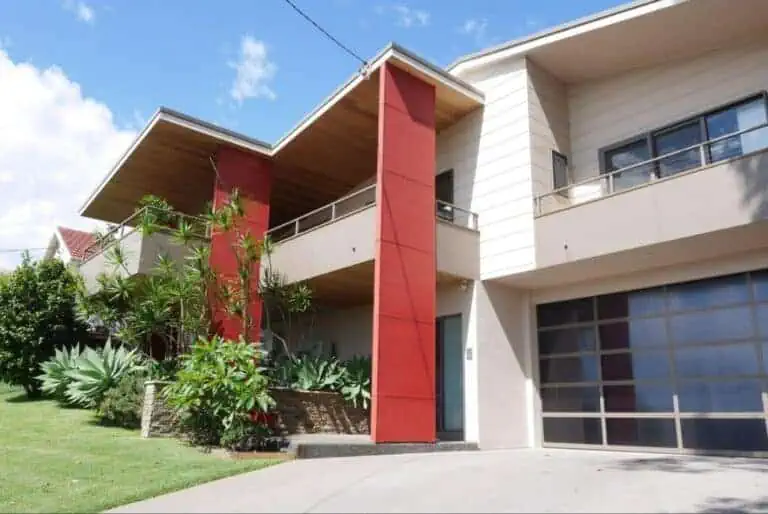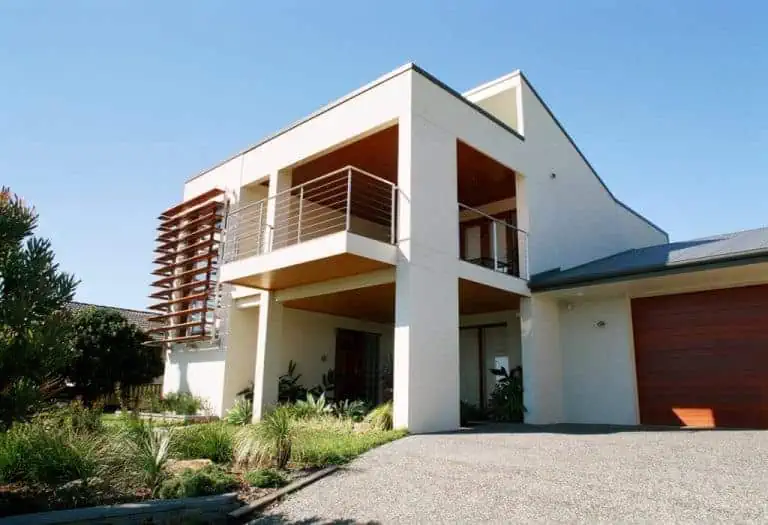Having a swimming pool is a quintessential part of the Australian dream, and with our warm climate and sunshine, having a pool is an absolute must-have for many homeowners. If you are designing a new home with a swimming pool or looking to add a pool as part of a home renovation project, there are several important factors to consider.
Factors to consider when adding a swimming pool to your home
For both new homes and existing properties, planning for a swimming pool commences with the building site. Adding a swimming pool to your home should not feel like an afterthought, but an integrated part of your overall home design that creates a harmonious indoor-outdoor living space.
The following list contains important items to consider when planning your swimming pool to ensure your pool makes the best use of your space and adds value to your home.
#1. Making the best use of your space
When selecting a pool design there’s often a tendency for people to choose the largest possible pool and shoehorn this into one corner of the yard, often compromising the entire external area.
In reality, your pool’s position, size and shape should make the best use of the available area without compromising the usefulness of the remainder of the property.
Consider the following elements considering the space for your pool:
- The size of the pool and the pool terrace
- The space this pool will occupy
- Pool fence arrangement
- The remaining area of the yard for other activities
- Privacy from neighbours
The positioning of the pool must consider access to direct sunlight, avoiding overshadowing by other buildings and trees. The pool needs to be positioned to ensure privacy to avoid overlooking by adjacent neighbours. Landscaping surrounding the pool and the yard must also be considered, particularly any larger trees which are prone to shed their leaves.
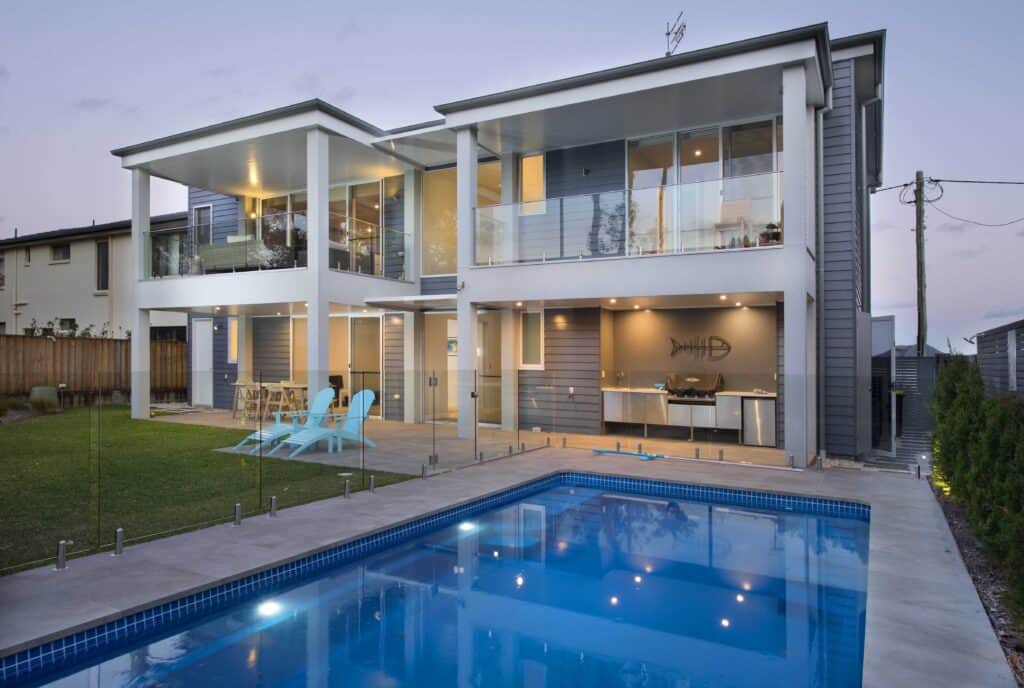
#2. Integrated indoor and outdoor living
The pool’s location in relation to the internal living areas is a crucial factor, both in terms of practicality and aesthetics.
Facilities used in conjunction with the pool such as the bathroom or kitchen should also be factored into the swimming pool design. Ideally, pool users should have access to these facilities without dripping water throughout the entire house. Generally, pools are built adjacent to outdoor living spaces with easy access to bathrooms and kitchens.
In the cooler months when the pool is not being used it can provide a very attractive outlook from the internal living spaces, particularly for properties which are otherwise without a view.
#3. Outdoor areas and swimming pool design
In most cases, homeowners are seeking a seamless indoor/outdoor relationship so that when using the pool there is an easy transition between the pool area and the outdoor and indoor living spaces. Continuity of the paving material is important for all the external spaces of the house to achieve an integrated aesthetic.
It is important the owner has a clear understanding of the appropriate size and shape of the pool for the area it is to occupy – look at our work on the Windi Woppa residence for example.
#4. Pool shapes
Pool shape is important as it should be compatible with the house, the boundary angles and the area set aside for other activities. Sometimes an irregular shape pool is easier to position in some awkward spaces compared to more geometric shapes.
The pool size and shape are also influenced by the type of activity that is anticipated and the most likely users of the pool. More serious swimmers looking for exercise opportunities will require a lap pool with larger dimensions, whereas a pool for purely recreational purposes can vary in size and shape according to the area available. Other factors to also consider is if a spa is to be included or if children will be swimming in the pool (in which case there should be a shallow end).
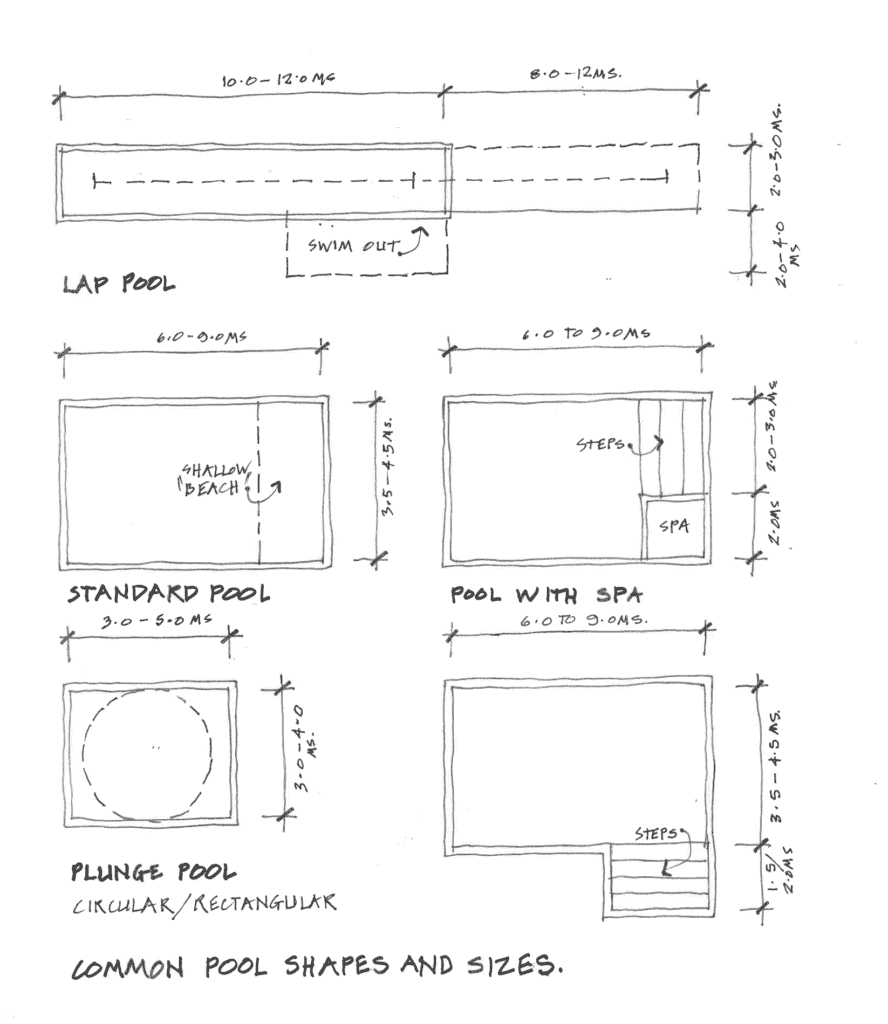
#5. Swimming pool materials
Swimming pools can be either fibreglass construction or in-situ concrete. Fibreglass pools come in a range of standard sizes and shapes placing some limitations on the design.
Concrete pools can be constructed in any size and shape depending on the owner’s requirements. The appearance of fibreglass pools has improved in recent years with better integration with the pool terrace. In many cases, the casual observer will find it difficult to determine whether the pool is concrete or fibreglass.
As a general rule fibreglass pools are more economical than in-situ concrete pools.
#6. BASIX energy efficiency assessment
The volume size of a pool will determine whether it requires BASIX energy efficiency assessment and compliance. To work out whether you need BASIX certification complete a free online BASIX assessment through the NSW government.
#7. Filtration and pool equipment
A swimming pool will require filtration equipment. This equipment requires regular inspection and can generate some noise when in operation.
A position for the pool equipment needs to be considered in the early stages of planning. Quite often this essential equipment is not considered until very late in the construction, resulting in poor outcomes. The pool equipment needs to be in reasonably close proximity to the pool for optimum efficiency.
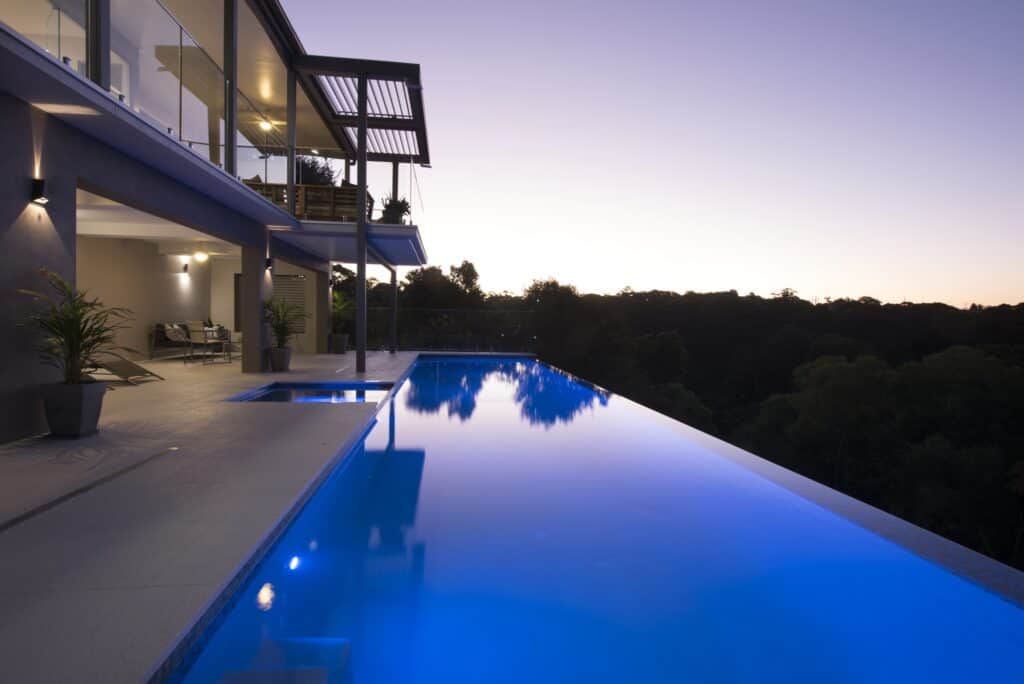
#8. Heating
If you are considering pool heating, the form of heating needs to be decided and provisions made for the heating system.
If the pool is heated a pool blanket may be required so the heat in the water does not dissipate overnight. If the pool filtration, heating and pool cover are not considered in the early design stages, awkward and unsightly solutions can result.
#9. Safety
An essential part of pool design is the consideration of child safety including pool fences and supervision.
The pool fence, while performing an essential safety function, can be visually intrusive depending on the material selected. It’s always ideal if the internal areas of the house, kitchen and living spaces can have casual surveillance over the pool.
You need to consider the positioning of the fences and gates in relation to access from the house to the pool area and access from the house to the other areas of the yard.
Ideally, it should not be necessary to have to pass through the pool area to reach the other parts of the yard. The inconvenience of passing in and out of pool gates can be a continuing nuisance.
#10. Landscaping
Careful landscaping is an essential part of the pool design. Effective landscaping can help conceal the pool fencing while greatly enhancing the setting of the pool and its surroundings.
The appropriate landscaping can help offset the large areas of paving that are often associated with pools and the pool terraces. Landscaping can also help integrate the pool design into the rear yard so that the entire space forms an integrated, attractive design.
#11. Cost
The cost of a pool and its associated elements can vary significantly after accounting for the abovementioned factors. By taking into account all these factors prior to planning your pool you can build up an accurate picture of the costs involved and make the most of your budget.
Can an Architect provide swimming pool design services for my home?
Absolutely. At Mark Lawler Architects we’ve completed countless home designs incorporating a pool, working with the Owner to manage their overall budget and create a unique outdoor space.
A pool can provide a great recreation facility for people of all ages during the long, hot Australian summers. If designed carefully a pool can also add an attractive outlook year-round and increase the value of your property. Take a look at our beautiful residential homes and see how Mark Lawler can design your dream home.

